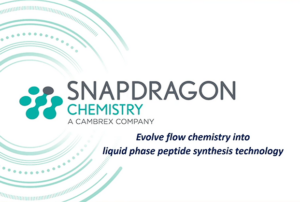Early-Stage Flow Process Development of a Key Intermediate toward PF-07265807, an AXL-MER Inhibitor Oncology Candidate
The application of continuous processing can afford certain advantages during development and scale-up, such as enhanced risk mitigation of hazardous compounds and reducing both manufacturing cycle time and solvent waste through telescoping steps and avoiding intermediate isolations. While telescoping is not unique to flow, the operating windows enabled by the process intensification only possible in flow are significant, and they often possess the additional benefit of accessing chemistries not feasible in a traditional batch process.
In our recent Organic Process Research & Development article, we discuss our collaboration with Pfizer focusing on efforts to translate an early-stage batch route for the AXL-MER inhibitor oncology candidate PF-07265807 into a viable continuous flow process. The route to the key intermediate of interest features two SNAr reactions, the latter utilizing aqueous hydrazine to enable an intramolecular cascade reaction, followed by a Boc deprotection. We assessed and demonstrated the suitability of the process for telescoping steps in flow by finding a solvent/base system that maintained the solubility of all species and led to efficacious reactions. We performed additional studies to reduce the concentration of aqueous hydrazine solution used as a feed in the continuous process to 5 wt % hydrazine, adding to the various safety advantages not amenable to a traditional batch process. Additionally, we utilized an automated D-optimal design of experiment study for the aqueous hydrazine step to increase our process understanding and screen effects during this early stage of development.
To learn more about the results of this collaboration, please read the full article in Organic Process Research & Development.




